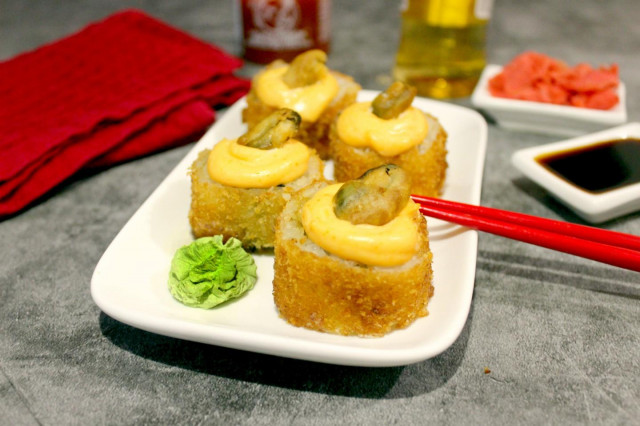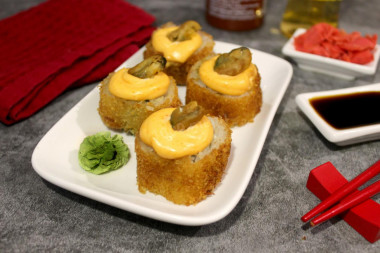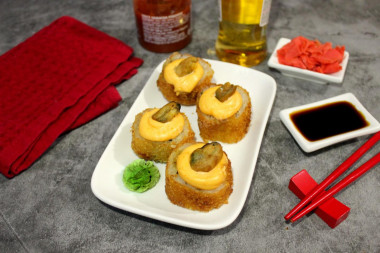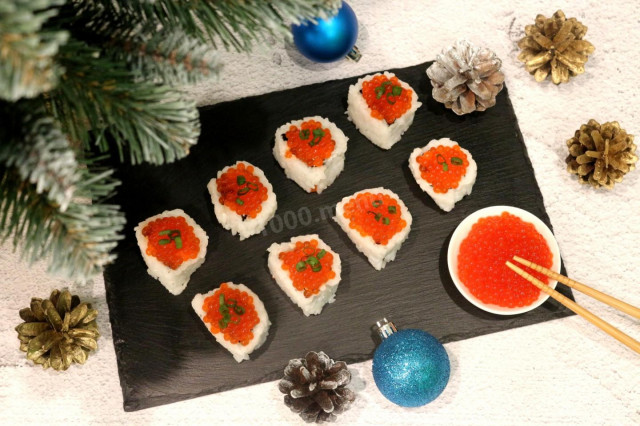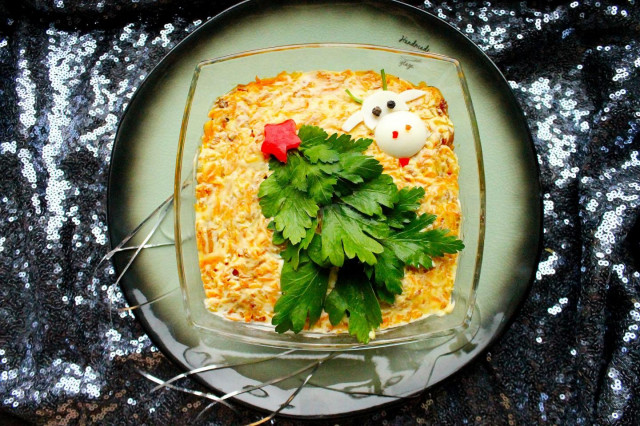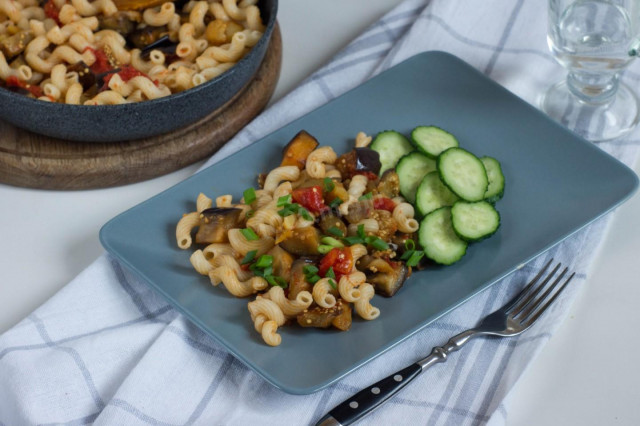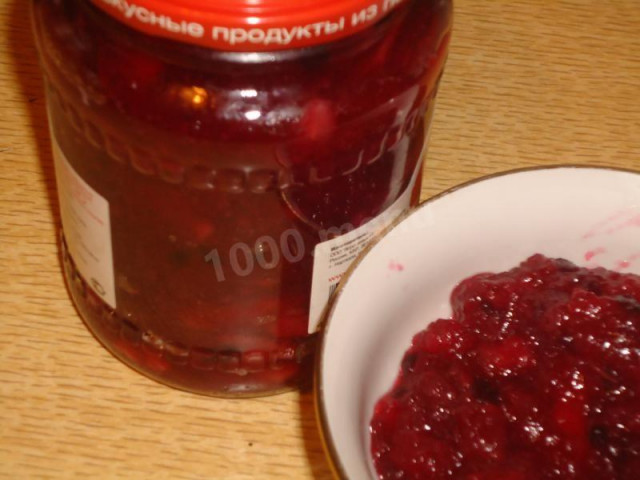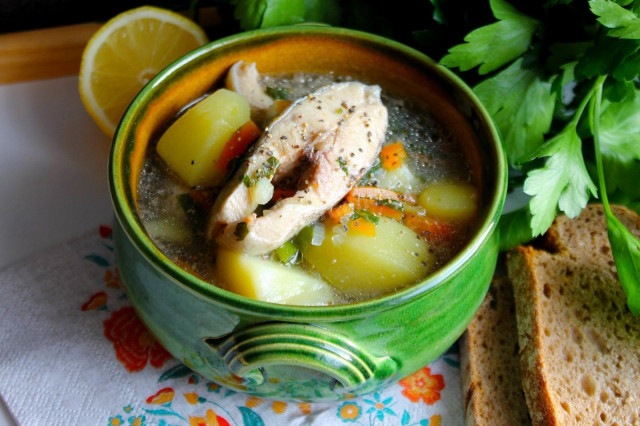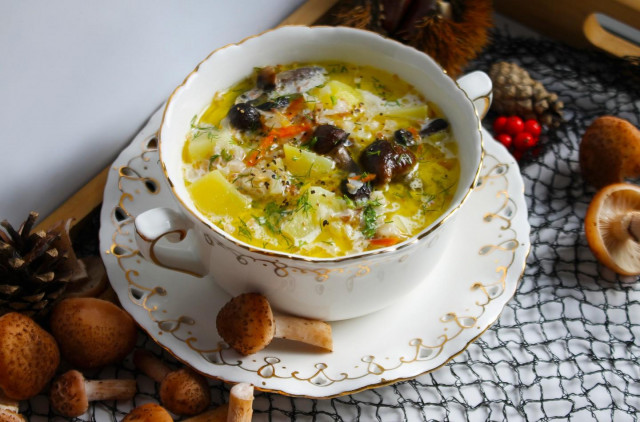Composition / ingredients
Step-by-step cooking
Step 1:
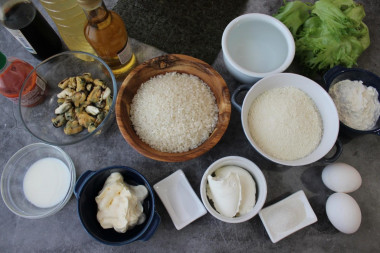
Prepare ingredients and inventory for making rolls. You will need a mat and a food wrap. Rice must be purchased Japanese, round-grain or special rice for sushi. Long-grain and steamed rice is categorically not suitable, because due to the low starch content in the grains, such rice does not have the necessary gluten, and the cooked dish will simply crumble. For refueling, it is necessary to use rice vinegar.
Step 2:
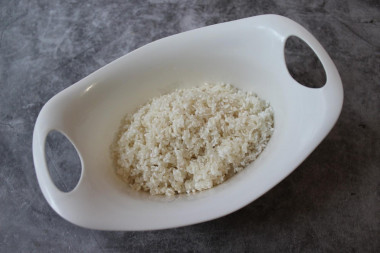
Pour the rice into a bowl, pour cold running water and, in order not to damage the grains, rinse the rice with careful movements, drain the muddy water and pour clean cold running water again. Rice should be washed at least 4 times, the water should become clean and transparent. Discard the washed rice in a colander and leave it for 10 minutes, during which time all the excess liquid will drain.
Step 3:
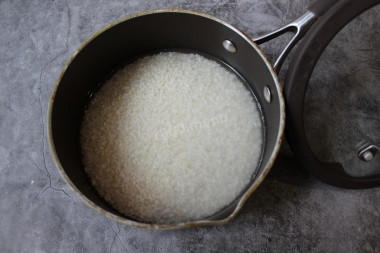
Pour the rice into a saucepan and cover with water, put on fire. It is very important to observe the ratio of rice and water. It should be 1:1. When the water boils, cover the pan with a transparent lid, reduce the heat to low and cook for 15 minutes. During this time, the moisture should completely evaporate. The lid cannot be opened during cooking, therefore, in order to see the cooking process, it is better to use a transparent lid.
Step 4:
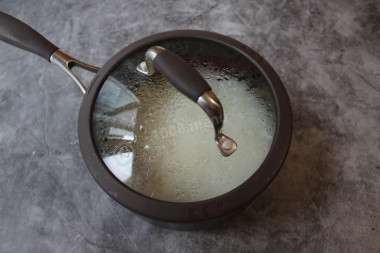
After the specified time, remove the pan with rice from the heat and leave the rice to steam under the closed lid for another 10 minutes. Do not open the lid, the rice should be fully cooked.
Step 5:
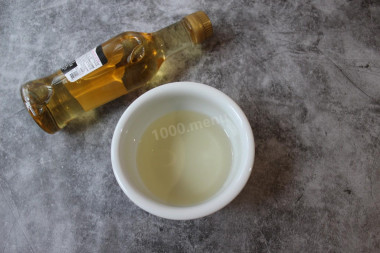
At this time, prepare the dressing. Pour rice vinegar into a small ladle (turku), add sugar and salt. Put the ladle on a slow fire and, stirring, dissolve the loose ingredients. As soon as the sugar and salt have dissolved, immediately remove the dressing from the heat. The dressing should never boil, so you can not cook it over high heat.
Step 6:
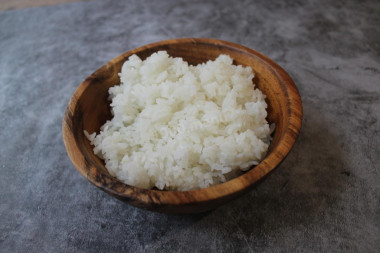
Put the finished rice in a wooden bowl, wiped with a damp towel, so the rice will not stick to the dishes. It is better to use a special tub of hangiri made of cypress, but I don't have one, so I used the one that was. Wooden dishes are used to prevent any interaction with rice vinegar, and also wooden dishes absorb excess moisture of rice when it is stirred.
Step 7:
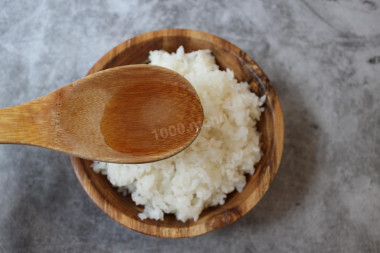
Take a wooden spatula and place it over the rice. Pour the vinegar dressing on the spatula, and it will gently spread over the rice. Break the rice with smooth movements, mix it carefully, trying not to damage the rice grains. Cover with a damp, clean towel and let the rice cool. When the rice cools down, you can start forming sushi and rolls.
Step 8:
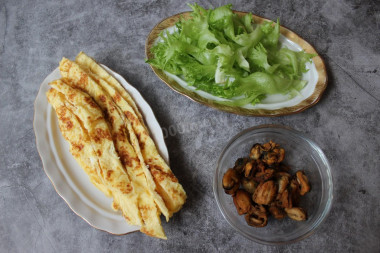
Beat eggs with milk, add salt and make an omelet from the egg mixture, which then cut into strips. Also cut the washed lettuce leaves into strips. Thawed mussels thoroughly rinse under water to get rid of sand and other dirt. Put them in a frying pan, pour in soy sauce and fry for a couple of minutes.
Step 9:
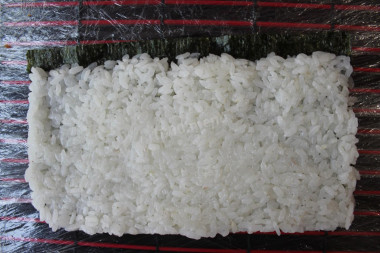
Wrap the mat several times with cling film, lightly lubricate with vegetable oil. Cut the nori sheets in half. On the prepared mat, put the first half of the nori leaf with the glossy side down. Moisten your hands in water mixed with rice vinegar in a ratio of 1:3, take 145 grams of boiled rice and level it along the nori, leaving 1 cm free without rice on top, and leaving 1 cm below for the redistribution of nori.
Step 10:
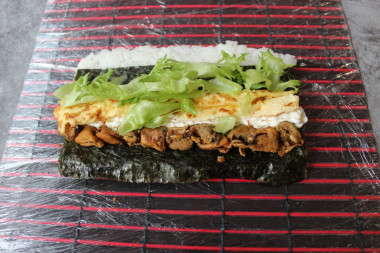
Now turn the nori over so that the rice ends up on the mat. At the same time, arrange the nori so that 1 cm of rice free of nori remains on top. Place the filling in the center of the nori leaf: first squeeze out the cream cheese curd through a pastry bag, put the cooked mussels next to it, lay out strips of lettuce leaves and strips of omelet next to the cream cheese.
Step 11:
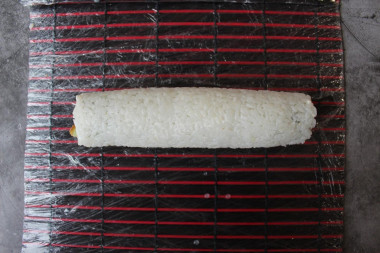
Holding the filling, start gently using a mat to roll up the roll. When the roll is formed, give the roll a round or square shape by pressing it on all sides with a mat.
Step 12:
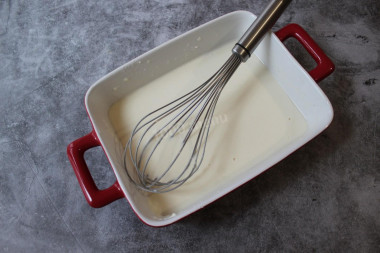
Prepare the batter. Pour cold water into a rectangular mold, add salt and flour. Mix thoroughly with a whisk. The batter should be homogeneous.
Step 13:
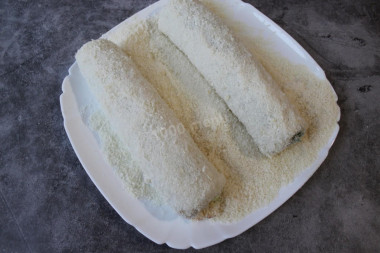
Take 1 wrapped roll and dip its edges into the batter first, and then the roll itself. Also do with the roll crumbling in panko breadcrumbs: first, pan the edges of the roll, and then all the sides.
Step 14:
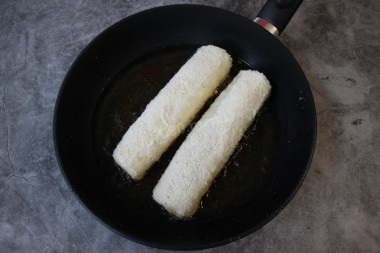
Pour vegetable oil into a wide frying pan and heat it up. The oil needs to be warmed up very well so that the dough sets well. When the oil warms up, dip the paned roll into the heated oil and fry on all sides until golden brown. This process will take several minutes.
Step 15:
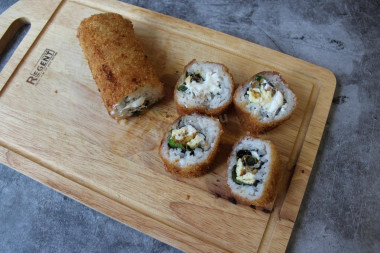
Put the finished roll first on paper towels, let the excess oil go away, and then transfer it to a board and, wetting the knife in the solution, cut it into 8 parts. Do not forget to wet the knife in the solution, so the rice will not stick to the knife, and will not lead to deformation of the rolls.
Step 16:
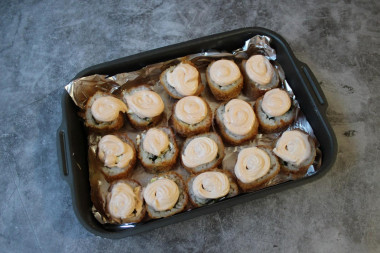
Prepare a spicy sauce: mix mayonnaise with shirachi. Put the foil on a baking sheet, put the rolls cut up on it, make a cap of hot sauce on top of the rolls.
Step 17:
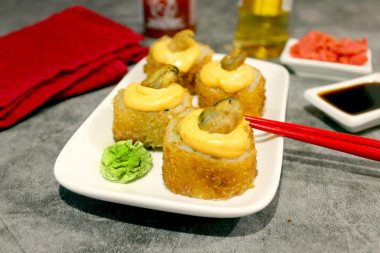
Put the rolls to bake in a preheated 200oC oven for 5-7 minutes. The duration and temperature of baking may vary depending on the temperature and design of the oven.
Be sure to wash the eggs before use, as even the seemingly clean shell may contain harmful bacteria. It is best to use food detergents and a brush.
To check whether the oil has warmed up well enough in the pan, you can do it in a simple way. Lower a wooden spatula into it. If bubbles have gathered around it, then you can start the frying process.
Caloric content of the products possible in the composition of the dish
- Whole cow's milk - 68 kcal/100g
- Milk 3.5% fat content - 64 kcal/100g
- Milk 3.2% fat content - 60 kcal/100g
- Milk 1.5% fat content - 47 kcal/100g
- Concentrated milk 7.5% fat content - 140 kcal/100g
- Milk 2.5% fat content - 54 kcal/100g
- Chicken egg - 157 kcal/100g
- Egg white - 45 kcal/100g
- Egg powder - 542 kcal/100g
- Egg yolk - 352 kcal/100g
- Ostrich egg - 118 kcal/100g
- Whole durum wheat flour fortified - 333 kcal/100g
- Whole durum wheat flour, universal - 364 kcal/100g
- Flour krupchatka - 348 kcal/100g
- Flour - 325 kcal/100g
- Soy sauce - 51 kcal/100g
- Granulated sugar - 398 kcal/100g
- Sugar - 398 kcal/100g
- Butter 82% - 734 kcal/100g
- Amateur unsalted butter - 709 kcal/100g
- Unsalted peasant butter - 661 kcal/100g
- Peasant salted butter - 652 kcal/100g
- Melted butter - 869 kcal/100g
- Salad mayonnaise of 50 % fat content - 502 kcal/100g
- Light mayonnaise - 260 kcal/100g
- Provencal Mayonnaise - 624 kcal/100g
- Provencal mayonnaise - 627 kcal/100g
- Table mayonnaise - 627 kcal/100g
- Vegetable oil - 873 kcal/100g
- Fried mussels - 59 kcal/100g
- Boiled mussels - 50 kcal/100g
- Nori - 3 kcal/100g
- Salt - 0 kcal/100g
- Water - 0 kcal/100g
- Rice vinegar - 20 kcal/100g
- Breadcrumbs - 347 kcal/100g
- Cottage cheese - 223 kcal/100g
- Round rice - 330 kcal/100g
- Lettuce leaves - 12 kcal/100g

